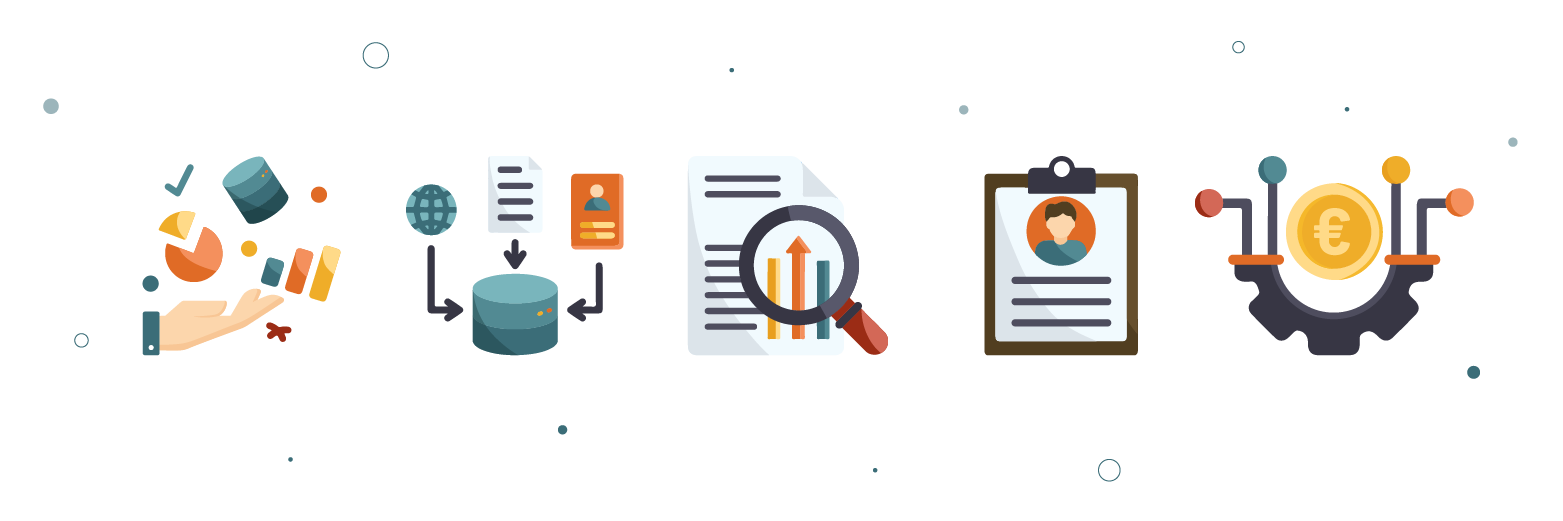Discover a complete customer profile to enhance sales and satisfaction. Learn how a 360-degree
view unlocks valuable customer insights with a real-world example from Stichting BKR.
Imagine that you are responsible for managing customer acceptance and communication at an insurance company. Daily, you make decisions based on the information that customers provide. Although you have details about their homes and families, it's essential to ask yourself: do you honestly know them?
For example, you can’t estimate their risk profiles while it’s crucial and mandatory for acceptance. Nor do you know if their desired coverage aligns with their interests and needs, which can lead to both underinsured customers and impersonal customer communications.
Without a 360-degree view of the customer, making informed decisions is impossible. You offer products or services that customers don't need, which makes them feel misunderstood. At worst, if you don't have the correct information, you may turn away potential customers who could have been welcomed.
Understanding your customers can help you avoid making wrong choices, missing opportunities, and damaging your reputation. This article will explore the concept of a 360-degree customer view, its benefits, and how it relates to Master Data Management (MDM). Additionally, we'll provide a real-world example from Stichting BKR to help illustrate the importance of having a complete customer view and helping you make informed decisions for your customers and your business.
Having a 360-degree customer view involves more than just gathering contact information. It’s a comprehensive collection of all the information you have about customers, both online and offline, gathered from various sources and systems. This can refer to information such as:
Having a 360-degree customer view can provide companies with multiple benefits, such as:

A 360-degree customer view helps identify customer behavior patterns and trends. This understanding leads to improved knowledge of why customers make certain choices, their needs and preferences, and how products and services can be better tailored. Some of the benefits include:

Having a detailed customer profile is crucial for understanding customers, but creating a 360-degree customer view is an ongoing process. Here are a few key steps:

Managing a vast amount or complex business data can be challenging for companies looking to operate efficiently. Companies use Master Data Management (MDM) to efficiently manage these critical (digital) data. MDM provides tools and processes that centralize, manage, and integrate data from different systems, ensuring consistent and accurate work across the organization.
MDM is instrumental in creating a Single Customer View (SCV). The SCV provides a holistic overview of customer data from multiple sources, including customer and contact information and purchase history. To enhance this view, contextual and behavioral data such as website visits, social media interactions, and interests are often incorporated to create a 360-degree customer view.

The BKR Foundation manages the Central Credit Information System (CKI), which contains the credit data of 8 million Dutch citizens (2022). They rely on Human Inference software DataHub to compile a customer view for assessing credit applications.
DataHub is a software that gathers a consumer's credit information, records it accurately, and allows consumers to access their data. This software enhances Stichting BKR’s services by giving credit providers reliable information to make credit decisions. Moreover, the entire search process takes only 0.2 seconds.

Look at the case study to discover how DataHub conducts over 10 million credit reviews annually for Stichting BKR
A 360-degree customer view refers to having a complete understanding of customers through online and offline information, such as contact details, demographics, customer history, and interactions. With this knowledge, companies can better cater their products and services to meet the customers' needs, ultimately leading to stronger customer relationships and better decision-making. Without this insight, companies may make wrong decisions and miss potential opportunities, resulting in reputational damage and unhappy customers.
Building a 360-degree customer view involves carefully collecting, integrating, analyzing, and segmenting data from various sources and systems. Master Data Management (MDM) can help manage and integrate vast amounts or complex business data to create a reliable customer view. An excellent practical example is Stichting BKR, which relies on advanced DataHub software to make reliable credit decisions, improve services, and speed up processes.
In short, having a 360-degree view of customers is essential for building strong customer relationships, making better decisions, and offering perfectly aligned solutions.

Our Master Data Management solution enables easy access to organizational data and creates a Single Customer View (SCV), resulting in informed decision-making, reduced compliance risks, and enhanced customer satisfaction.
Are you struggling to manage the vast amount of data your business collects? With stricter regulations, managing your information effectively is more critical than ever. Luckily, a software solution can help: Master Data Management (MDM).
Don't hesitate to contact us to schedule a brief introductory meeting on how MDM can help your business succeed. Without any other commitments, but with helpful guidance.
Poor data quality costs organizations hundreds of thousands of euros per year. Unreliable data leads to incorrect decisions and inefficient processes.
Fortunately, our data quality checklist allows you to assess in just 5 minutes whether your data meets the 6 data quality dimensions. Please leave your details to download the document instantly.
A robust compliance process is crucial for safeguarding your organization against potential risks. Our team of experts is here to provide you with personalized guidance and the necessary tools to create a future-ready compliance policy, including CDD.
Fill out your details below, and let’s schedule a brief introductory meeting. There’s no obligation—just valuable insights tailored to your needs.